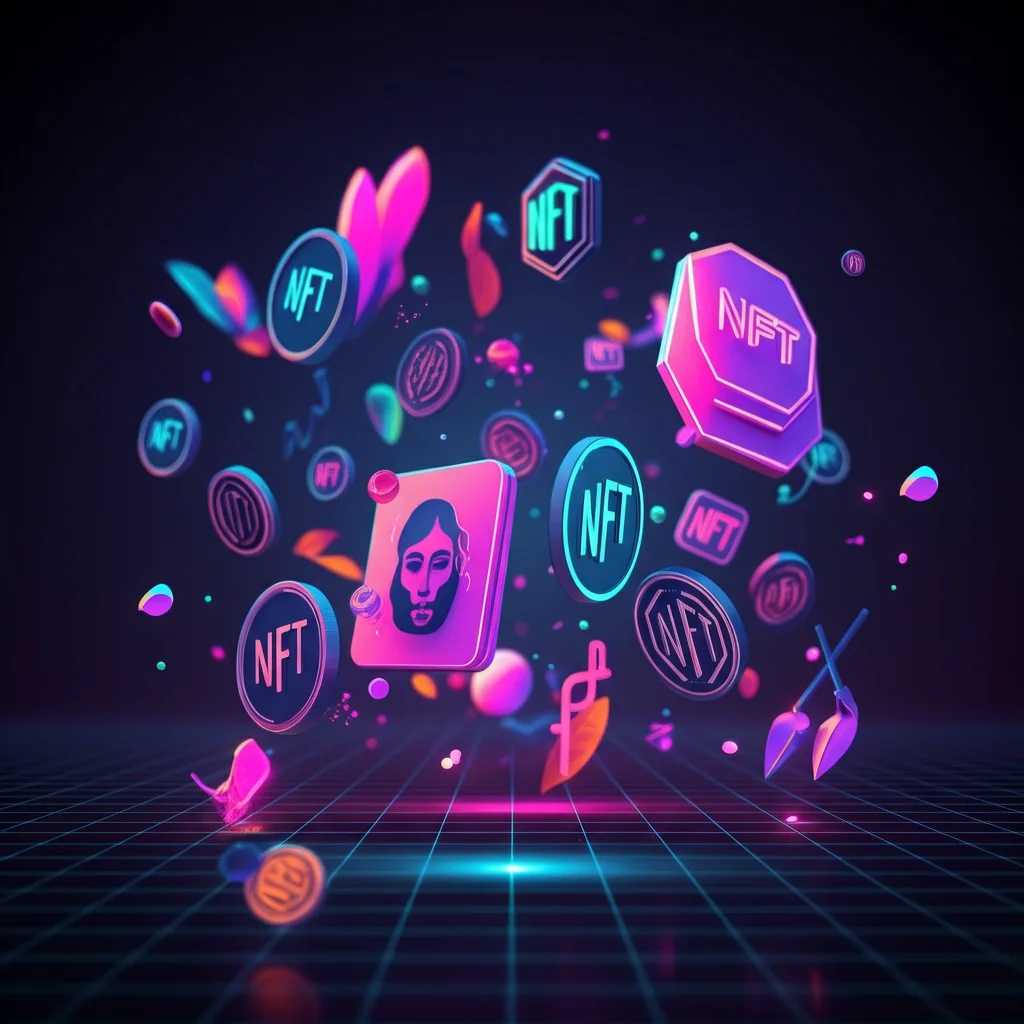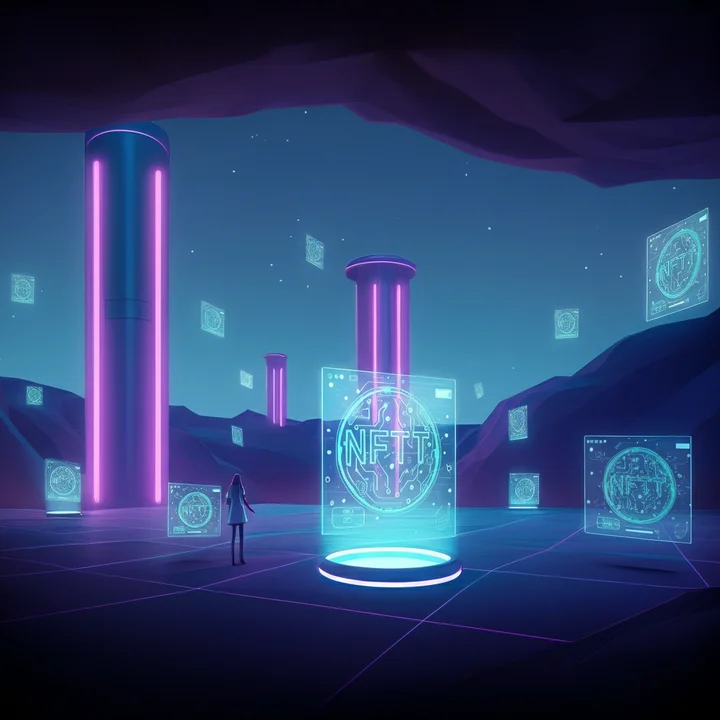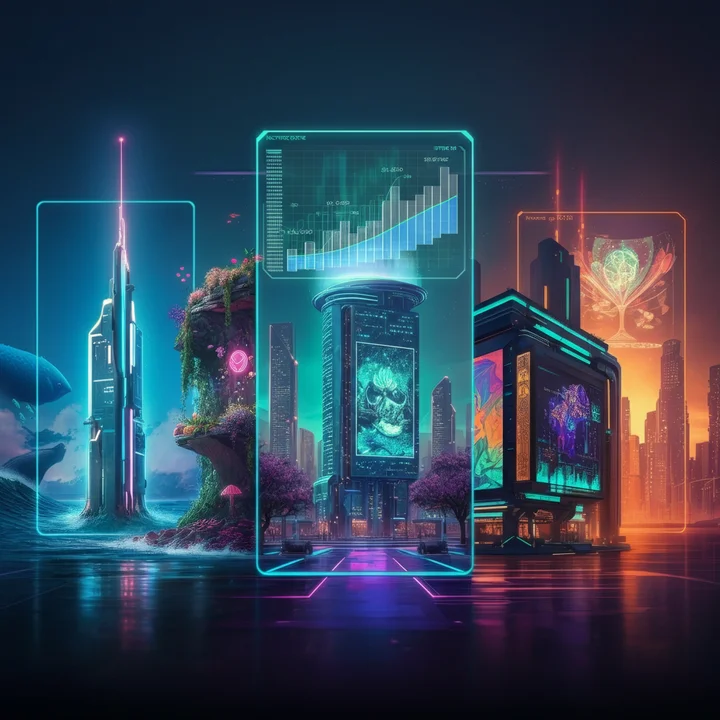The world of digital assets has been buzzing with the emergence of NFTs, or Non-Fungible Tokens. You’ve probably heard about someone spending millions on a digital artwork or celebrity trading cards being sold on blockchain platforms. But what exactly are they, and how do they work?
This post will help you understand what NFTs are, the technology behind them, their common use cases, and the benefits and criticisms associated with their rise. By the end, you’ll have a clear grasp of what makes NFTs revolutionary and why they’re shaping the future of digital ownership.
Introduction to NFTs (Non-Fungible Tokens)
An NFT is a type of digital asset that represents ownership of a unique item or piece of content. Unlike cryptocurrencies such as Bitcoin or Ethereum, which are interchangeable (or "fungible"), NFTs are unique and cannot be replicated. They allow creators, collectors, and artists to authenticate and sell their works in a secure, transparent way on blockchain technology.
NFTs have now permeated various industries, from art and music to gaming and identity verification, offering creators an innovative way to monetize their work while providing buyers with provable ownership.
The Difference Between Fungible and Non-Fungible Assets
To grasp NFTs’ significance, it’s essential to understand the concept of fungibility:
Fungible Assets are items that are identical and interchangeable. Examples include money (one $10 bill is the same as another $10 bill) and cryptocurrencies (one Bitcoin equals one Bitcoin).
Non-Fungible Assets, on the other hand, have unique properties and are not interchangeable. Think of rare baseball cards, property deeds, or a custom piece of art. You can’t simply swap one for another because each holds its own specific value and uniqueness.
NFTs fall into the latter category. Through blockchain technology, these digital assets have verifiable scarcity and ownership, which means they are ideal for representing collectibles and assets with unique value.
Underlying Technology Powering NFTs
At the heart of NFTs lies blockchain technology. Here’s an overview of the technical elements that make NFTs functional and secure:
1. Blockchain
NFTs are powered by blockchains, particularly Ethereum, though other blockchains like Flow and Binance Smart Chain have emerged as strong players. A blockchain is a decentralized digital ledger that records ownership and transactions, ensuring transparency and security.
2. Smart Contracts
NFTs operate through smart contracts, which are self-executing agreements coded into the blockchain. These contracts automatically verify, enforce, or execute actions once specific conditions are met. They ensure that creators set rules for royalties or limited editions when minting NFTs.
3. Token Standards
Ethereum’s token standards make NFT creation possible:
ERC-721 is the first standard specifically designed for NFTs. It ensures each token is unique and trackable.
ERC-1155 allows for both fungible and non-fungible tokens to be managed in a single contract, adding flexibility for developers and platforms.
Together, these technologies enable NFTs to be minted, bought, traded, and verified without the need for intermediaries.
Common Use Cases for NFTs
NFTs have unlocked new ways to own, sell, and interact with digital assets. Here are some of the most common applications:
1. Art
The art world has seen a massive surge in NFT adoption. Digital artists can now tokenize their creations and sell them directly to collectors. Beeple’s “Everydays – The First 5000 Days” made headlines when it sold for $69.3 million, highlighting the potential of NFTs in the art space.
NFTs also allow artists to earn royalties from future sales, ensuring they continue to benefit as the value of their works increases.
2. Music
Musicians are utilizing NFTs to regain control of their work and bypass traditional record labels. Through NFTs, they can sell exclusive albums, singles, or concert tickets while maintaining ownership rights. Kings of Leon, for instance, released an NFT album, offering fans unique perks like VIP concert passes.
3. Collectibles
From digital trading cards to virtual pets, collectibles are one of the key drivers of the NFT market. Platforms like NBA Top Shot let fans buy, sell, and trade official highlights from basketball games as NFTs, combining sports passion with digital ownership.
4. Gaming
The gaming industry is leveraging NFTs to allow players to own in-game assets like skins, weapons, and characters. These assets can be traded or used across multiple games in the future, creating real-world value for virtual items.
5. Digital Identity
NFTs are being explored as a way to verify and secure digital identities. This application could revolutionize personal data management, providing a new level of privacy and ownership in areas like online profiles, reputation systems, and certifications.
NFT Ownership and Authenticity
One of the most compelling aspects of NFTs is their ability to prove ownership and authenticity. Each NFT is minted with metadata that contains detailed information about the creator, the asset itself, and its transaction history. This transparency helps eliminate counterfeit goods and ensures buyers know exactly what they’re getting.
When an NFT is purchased, the buyer receives a digital certificate of ownership that is both unique and recorded on the blockchain. This certificate can’t be altered, making it easy to verify at any time.
Benefits and Criticisms of NFTs
Though NFTs have plenty of enthusiasts, they also face criticism. Here’s a balanced look at their benefits and drawbacks:
Benefits
Empowering Creators: NFTs provide artists and content creators with direct monetization avenues, cutting out intermediaries.
Transparency and Security: Blockchain technology ensures every transaction is traceable and tamper-proof.
Royalties for Creators: Smart contracts enable artists to earn royalties automatically whenever their work is resold.
Market Accessibility: NFTs offer opportunities for global participation, enabling anyone to create or invest.
Criticisms
Hype-Driven Value: Critics argue that many NFTs are overpriced due to speculative buying, with value often divorced from utility.
Environmental Concerns: Minting and trading NFTs consume significant energy on blockchains like Ethereum, though Layer 2 solutions aim to address this issue.
Regulation and Scams: The unregulated nature of the NFT market makes it susceptible to fraud and intellectual property disputes.
Environmental Impact of NFTs and Layer 2 Solutions
One of the major criticisms of NFTs is their environmental toll. Ethereum’s proof-of-work model consumes enormous amounts of energy for every transaction, leading to a significant carbon footprint.
However, the industry is working toward eco-friendly alternatives:
Layer 2 Solutions: These are secondary frameworks built on top of the primary blockchain to process transactions more efficiently. Examples include Polygon and ImmutableX, which reduce energy consumption drastically.
Switch to Proof-of-Stake: Ethereum’s transition to Ethereum 2.0, a proof-of-stake model, promises to cut energy usage by over 99%.
These innovations aim to make NFTs a more sustainable technology moving forward.
The New Era of Digital Ownership
NFTs are reshaping how we think about ownership in the digital age. From art to collectibles, these tokens are enabling novel opportunities for creators and collectors alike, while introducing businesses to new revenue streams.
Whether you’re an artist looking to tokenize your work or a collector exploring digital investments, one thing is clear: NFTs are here to stay.
If you’re curious about taking your first steps into the NFT world, start by exploring trusted marketplaces like OpenSea, Rarible, or Foundation. Who knows? You might just find the next big digital treasure.



